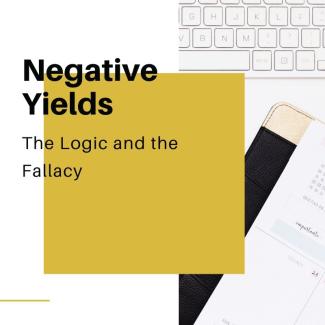
The Logic and Fallacy of Negative Yields
By Gary Silverman, CFP®
You may have heard that banks in Europe pay negative yields. This is a phenomenon where depositors to those banks get negative interest—essentially a guarantee that however much money they put into the bank, they’ll get less money out.
This actually makes a bit of sense. In an article on the Advisor Perspectives website, Michael Lebowitz points out that this is common in many other areas of life. If you have coins and jewelry you don’t want to keep at home due to a fear of theft, you might pay a bank to house them in a safe deposit box. Likewise, my friend, Donna Adams, helps people with boats or RVs that won’t fit in a driveway or when all of their belongings no longer fit in their homes. Donna helps by offering Self-Storage units. That Adams Self-Storage charges for this surprises no one.
Looked at in this way, there is a certain logic about a bank charging to store cash for you. You have it, you want to keep it safe, they charge to help you with this. So why haven’t banks been doing this all along?
Because it’s stupid.
Think about it. If you put your jewelry in a safe deposit box and the bank rented out the pieces, you’d want to be compensated. If you stored your RV at Donna’s place and she loaned out your vehicle for another family to take a trip to Maine, you’d expect her to pay you, not for you to pay her. But you aren’t letting the bank use your jewelry, and you’re not allowing Donna to rent out your RV. The deal is that you pay them to safely store the item.
This is very different than when you deposit money into a bank.
When you do that by opening a checking or savings account or by purchasing a CD, you are not asking the bank to store your money for you. Your deposit is a loan to them. That’s why they pay you interest. They get to use the money and you expect them to pay you for the use.
The bank might loan it to a student going to college, or a family upsizing a vehicle, or your cousin buying her first home. The student, family, or cousin (the borrowers), in turn, pay the bank interest. The borrowers get what they want even if they don’t have the cash readily available. The bank makes money on the difference in lending and savings rates. And you earn a little bit of interest on funds that you don’t need.
So why the heck are banks in Europe paying negative rates? Simple: the companies and individuals involved have more money than they need and no safe place to store it where it would be immediately available. And the banks don’t need it as they are already cash flush.
Okay…it’s a bit more complicated than that, but this isn’t a column in The Economist, and I don’t have the room to expand, anyhow.
Fortunately, banks in our country still have plenty of people to loan to, so they still need your money. And, at least for now, you’ll have them paying you instead of the other way around.
Gary Silverman, CFP® is the founder of Personal Money Planning, LLC, a Wichita Falls retirement planning and investment management firm and author of Real World Investing.

